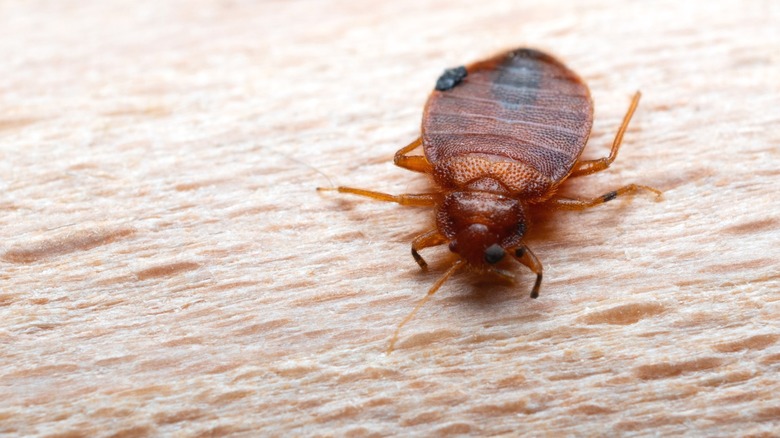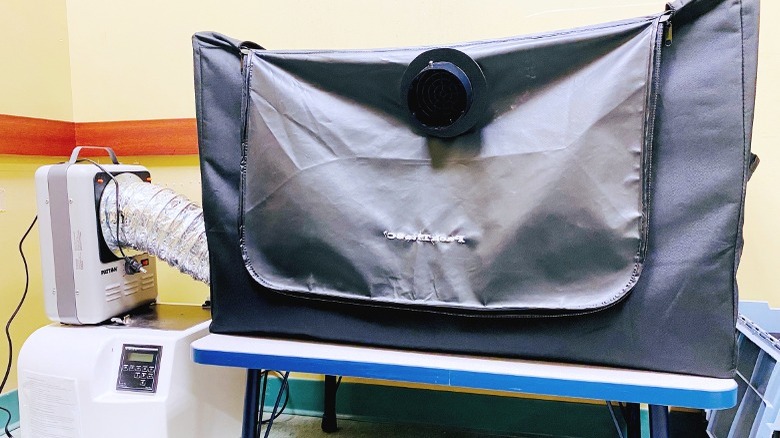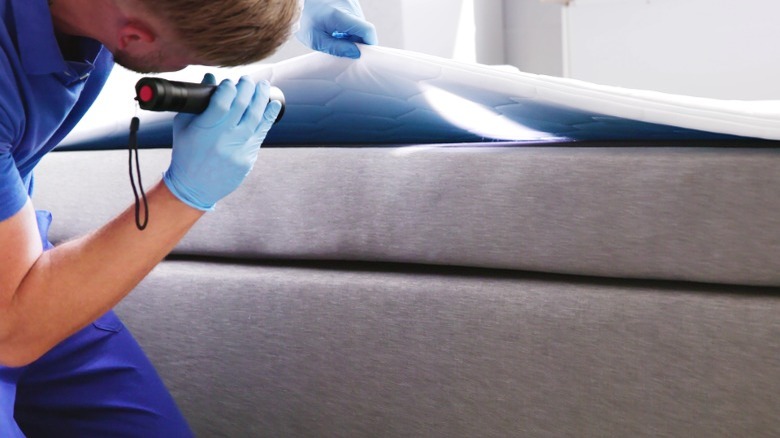Bed Bugs Might Be Lurking In Your Wooden Furniture. Here's How To Get Rid Of Them
We may receive a commission on purchases made from links.
Bed bugs are a common issue in many areas, causing problems ranging from skin bumps and itchiness to depression, sleep problems, and even anemia in severe cases. Finding and eliminating these pests in their entirety is crucial in preventing future infestations. But if you only look at the mattress and not your bed's wooden frame, you could be missing significant populations.
While mattresses are a bed bug hotspot, they can also take shelter within joints, holes, and other nooks and crannies on wood furniture. When you buy furniture secondhand, assessing it for bed bug activity is a good idea before bringing it into the house. Otherwise, an integrated approach using various methods to remove bed bugs, like bed bug traps and general cleaning, is ideal for pests already in the home. Yet, for wood furniture, some treatments work better than others. For instance, steam is generally among the best bed bug extermination methods. But it can also warp frames and damage finished items, making it impractical for many wood pieces.
High heat without the extra moisture, on the other hand, is one of the most effective ways to kill bed bugs in wooden furniture. Applying heat at around 120°F will preserve wood and finishes while killing bugs wherever they hide. Bed bugs begin dying at 113°F, but it takes roughly 90 minutes of constant exposure to ensure dieoff. Raising the temperature to 118°F, you'll only need to treat the furniture for about 20 minutes before the bugs begin dying.
Use heat to remove bed bugs from wooden furniture
You have a few ways to apply heat to kill bed bugs in your wood furniture pieces. For convenience, you can use a hair dryer, though it can be time-consuming and only partially effective. Hair dryers can reach up to 140°F on high heat, a sufficient temperature to kill the pests. You'll have to direct the heat at different areas for several minutes each, though, and it might miss deeply embedded bugs. Plus, the dryer may drive the bugs from their hiding place, so you'll need a vacuum handy to suck up any trying to make a run for it.
A better solution would be to heat the entire piece of furniture. You can use high-powered bed bug heaters and fans to distribute heat in a room and get the temperature over 113°F to kill bugs hiding throughout. Kits cost over $1,000, but rental equipment is often available through local pest control companies, and the cost starts at an average of a couple hundred dollars.
Alternatively, you can try a portable bed bug heater. The chamber is a collapsible bag with interior heaters and distributors that apply heat to items encased in it. Some options, like the ZappBug Room Bed Bug Heater, are large enough to hold full-sized couches. The system is available for purchase in several sizes from various distributors, or you may be able to rent one from a local supplier. Units can take several hours to kill bugs and their eggs, but they're a dependable option to treat entire wood furniture pieces with minimal effort.
When to call a professional
When bed bugs are in your wood furniture, it's a safe bet that there's more living elsewhere in the home. According to Virginia Tech's Department of Entomology, bed bugs reach adulthood within 37 days and can live up to a year. During that time, a single female produces over 100 eggs, while some estimate they can lay up to 500 in their lifetime (dependent on how much blood she's able to consume). As you might imagine, populations can explode and spread beyond your mattress and furniture in no time if you don't completely eradicate the issue. Unfortunately, bed bugs are experts at eluding extermination techniques, and at-home methods don't always ensure a dependable fix.
If you notice bed bugs in non-furniture areas (e.g., outlets, baseboards, or carpet) or infestations become a recurring issue after several treatments, you should find a professional exterminator. Pest control experts have more experience and the most efficient equipment for full-home bed bug treatment. Since bed bug heating exterminators may not need licensing or certifications (as they don't use chemicals), you should always research and compare each servicer's experience, training, practices, and reviews to guide your decision.


